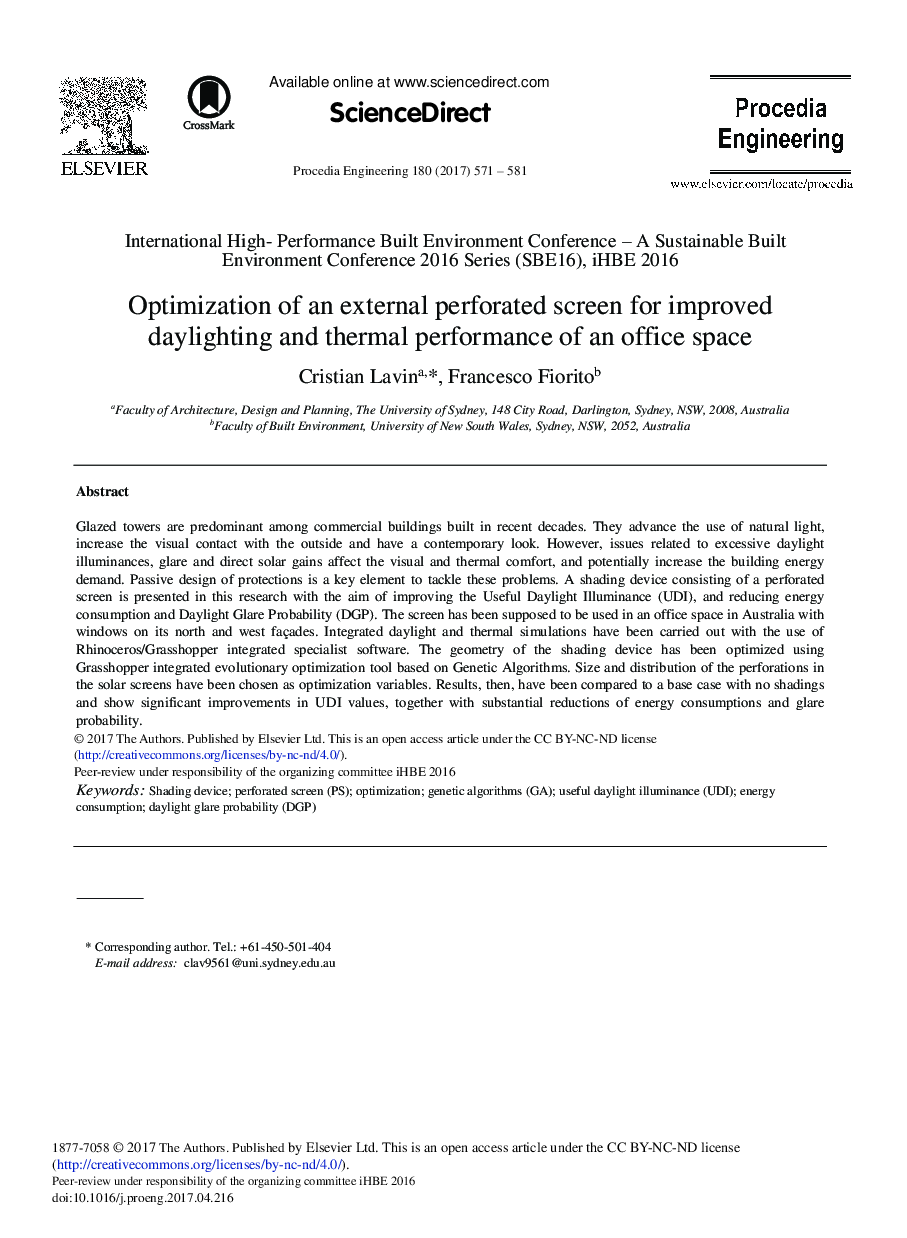| Article ID | Journal | Published Year | Pages | File Type |
|---|---|---|---|---|
| 5028961 | Procedia Engineering | 2017 | 11 Pages |
Glazed towers are predominant among commercial buildings built in recent decades. They advance the use of natural light, increase the visual contact with the outside and have a contemporary look. However, issues related to excessive daylight illuminances, glare and direct solar gains affect the visual and thermal comfort, and potentially increase the building energy demand. Passive design of protections is a key element to tackle these problems. A shading device consisting of a perforated screen is presented in this research with the aim of improving the Useful Daylight Illuminance (UDI), and reducing energy consumption and Daylight Glare Probability (DGP). The screen has been supposed to be used in an office space in Australia with windows on its north and west façades. Integrated daylight and thermal simulations have been carried out with the use of Rhinoceros/Grasshopper integrated specialist software. The geometry of the shading device has been optimized using Grasshopper integrated evolutionary optimization tool based on Genetic Algorithms. Size and distribution of the perforations in the solar screens have been chosen as optimization variables. Results, then, have been compared to a base case with no shadings and show significant improvements in UDI values, together with substantial reductions of energy consumptions and glare probability.
